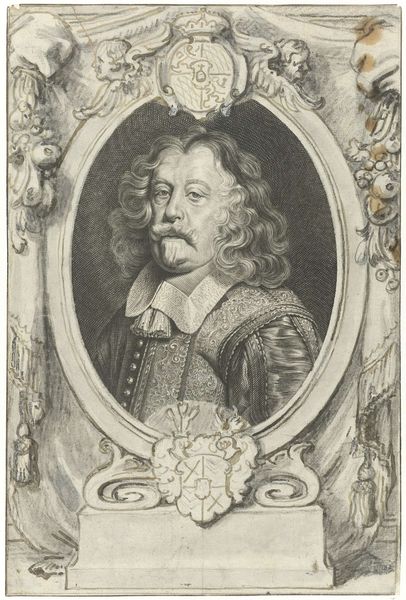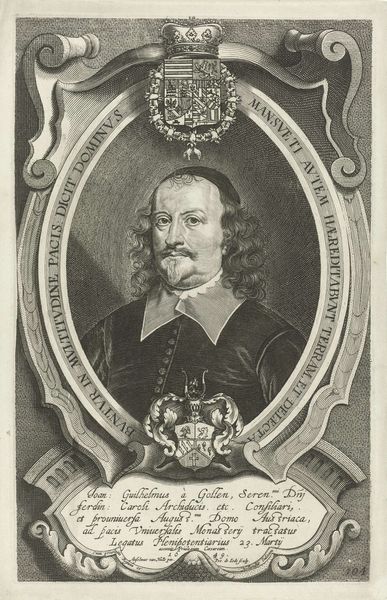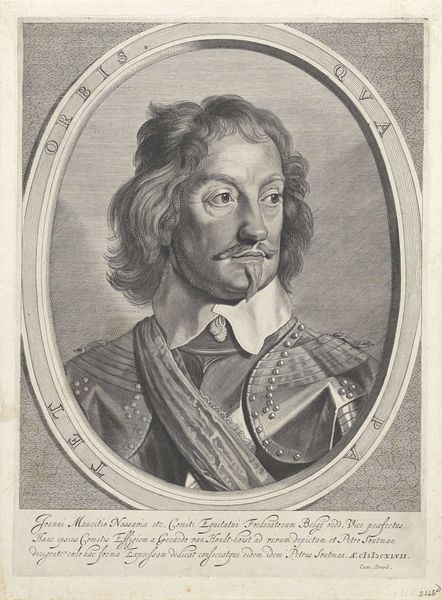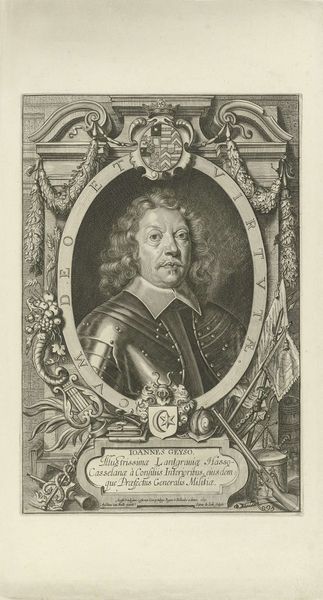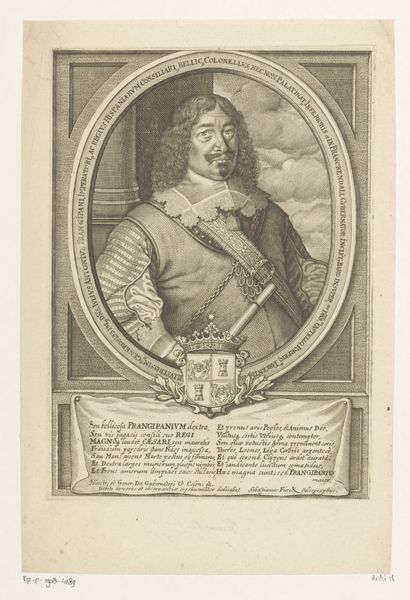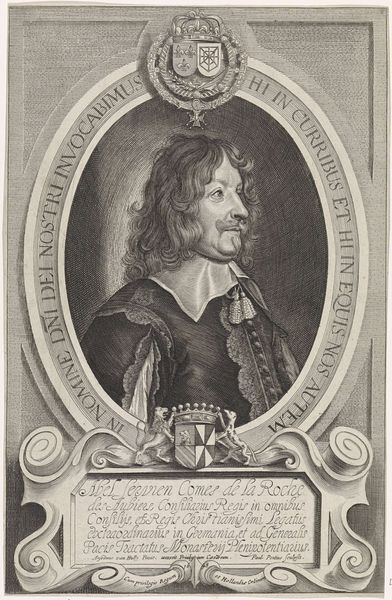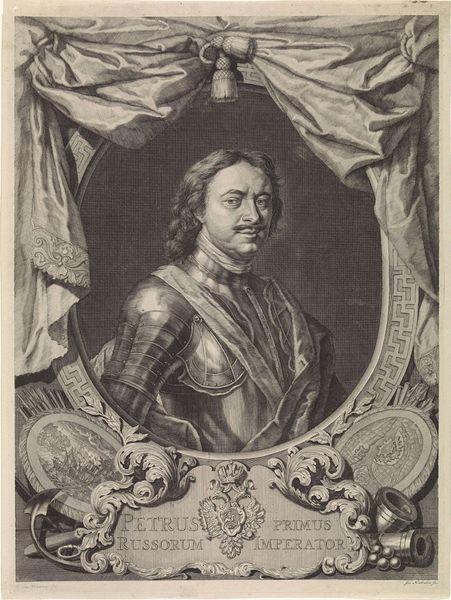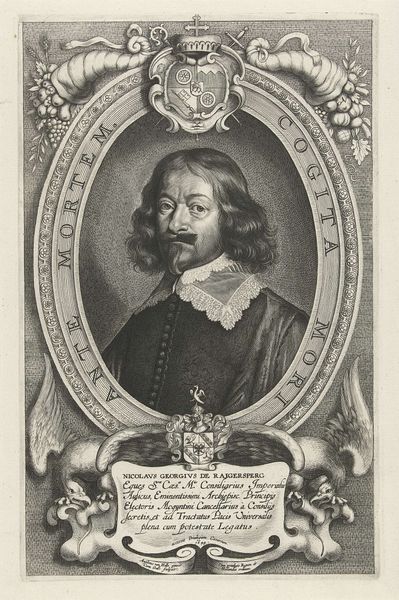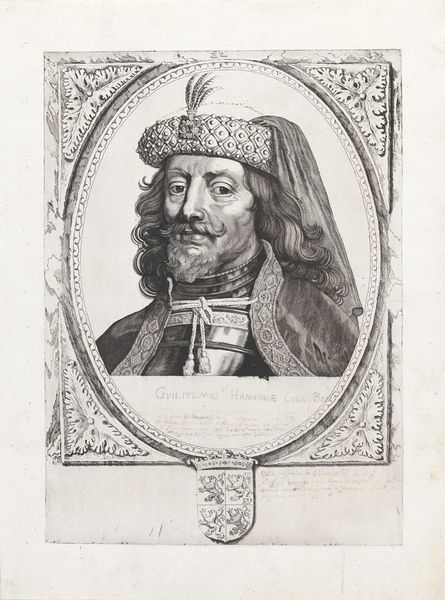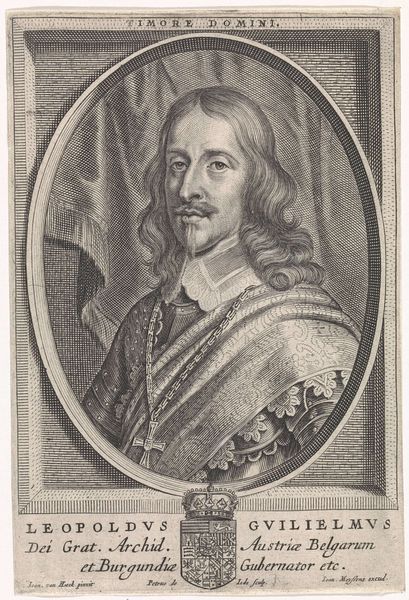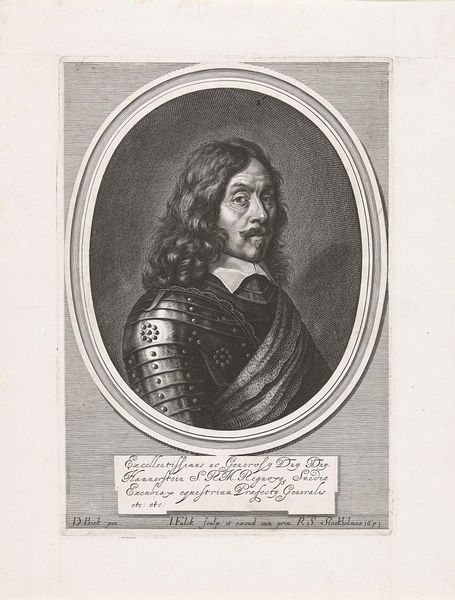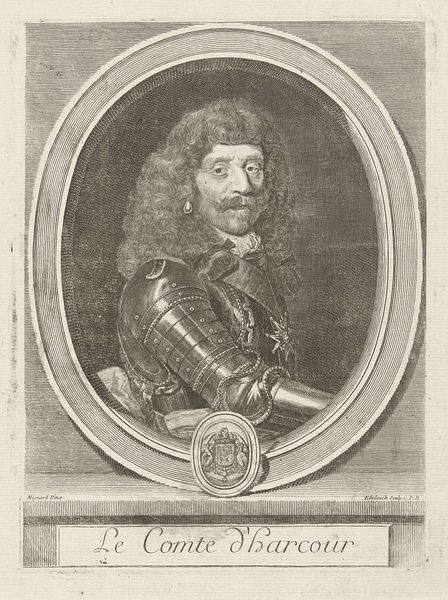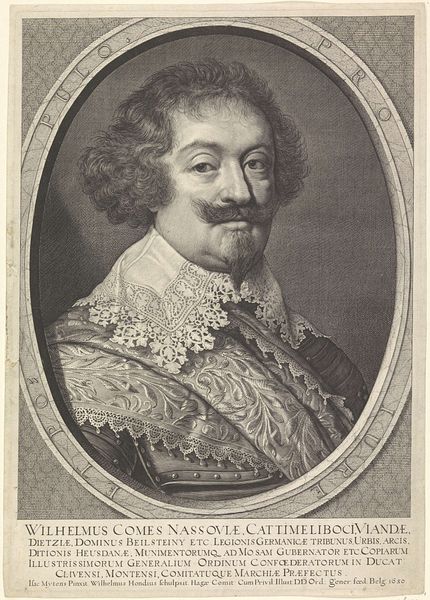
print, engraving
#
portrait
#
baroque
# print
#
old engraving style
#
history-painting
#
engraving
Dimensions: height 313 mm, width 211 mm
Copyright: Rijks Museum: Open Domain
Curator: Here we have a 1658 engraving, "Portret van Maximilian Kurtz von Senftenau," crafted by Pieter de Jode the Younger. Editor: The meticulous line work and details forming Maximilian's ornate garment and his rather stoic face instantly struck me; it’s a display of status frozen in monochrome. Curator: Exactly. The engraving is so detailed that you can almost feel the weight of his rich robes, speaking to the elite's self-representation at that time, but, beyond that, consider the economic realities of printmaking in the 17th century: who commissioned it and for what purpose? Editor: I would expect a display of power given he's framed by those armorial bearings at the top. Were prints like this used as diplomatic gifts, or were they circulated amongst the aristocratic networks? It’s about controlling an image of nobility, isn't it? Curator: Undeniably. Printmaking allowed for the mass dissemination of images, standardising ideals and solidifying hierarchy. The engraving process itself is labor-intensive—each line meticulously carved into a metal plate, mirroring the craftsmanship evident in Maximilian’s clothing and heraldic details. Editor: It’s an intersection of elite wealth and skilled labor creating an image designed for specific viewers within a definite socio-political context. Curator: The consumption and distribution of these prints played a critical role in constructing and maintaining power during that time. Did people question such representations or simply accept the rhetoric of status and rule. Editor: That question of acceptance is where social history steps in. This engraving serves as a document, but one that also helps reveal what were those networks for self-promotion. What can prints like this reveal about 17th-century societal views on authority and class? Curator: In examining the materiality and dissemination of engravings such as these, we unveil layers of production, consumption, and power relations intricately woven into the fabric of 17th-century society. Editor: Seeing it within the broader network, it goes beyond a portrait – it’s a cog in a bigger social mechanism.
Comments
No comments
Be the first to comment and join the conversation on the ultimate creative platform.
